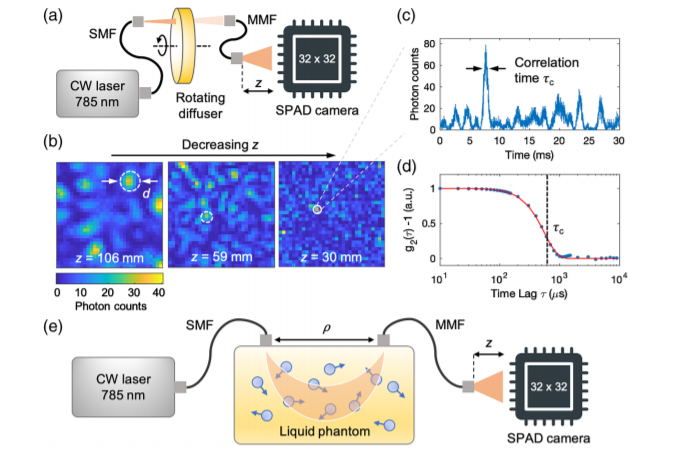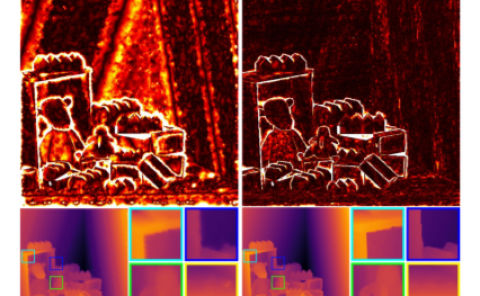High-sensitivity multispeckle diffuse correlation spectroscopy
PubDate: September 2020
Teams: Facebook
Writers: Edbert J. Sie, Hui Chen, E-Fann Saung, Ryan Catoen, Tobias Tiecke, Mark A. Chevillet, Francesco Marsili
PDF: High-sensitivity multispeckle diffuse correlation spectroscopy

Abstract
Significance: Cerebral blood flow is an important biomarker of brain health and function as it regulates the delivery of oxygen and substrates to tissue and the removal of metabolic waste products. Moreover, blood flow changes in specific areas of the brain are correlated with neuronal activity in those areas. Diffuse correlation spectroscopy (DCS) is a promising noninvasive optical technique for monitoring cerebral blood flow and for measuring cortex functional activation tasks. However, the current state-of-the-art DCS adoption is hindered by a trade-off between sensitivity to the cortex and signal-to-noise ratio (SNR).
Aim: We aim to develop a scalable method that increases the sensitivity of DCS instruments.
Approach: We report on a multispeckle DCS (mDCS) approach that is based on a 1024-pixel single-photon avalanche diode (SPAD) camera. Our approach is scalable to >100;000 independent speckle measurements since large-pixel-count SPAD cameras are becoming available, owing to the investments in LiDAR technology for automotive and augmented reality applications.
Results: We demonstrated a 32-fold increase in SNR with respect to traditional single-speckle DCS.
Conclusion: A mDCS system that is based on a SPAD camera serves as a scalable method toward high-sensitivity DCS measurements, thus enabling both high sensitivity to the cortex and high SNR.


